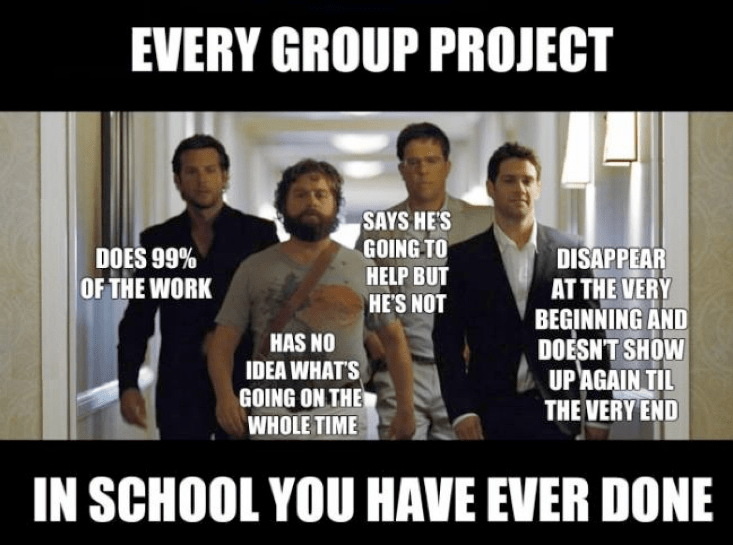Democracy can’t work. Mathematicians, peasants, and animals, that’s all there is — so democracy, a theory based on the assumption that mathematicians and peasants are equal, can never work. Wisdom is not additive; its maximum is that of the wisest man in a given group.
«Glory Road» by Robert A. Heinlein
Having supervised quite a few student projects (yup, too lazy to count), I’m still confounded by the willingness of many students to protect group members who do not contribute. A few groups had these members, but despite some dissatisfaction, usually these students are usually protected by other students.

I did ask students once whether they would protect these students, and quite a few said they would. It was done online (and perhaps I should have mentioned that the system did show who voted which way 😉 ).
But yeah, I find it hard to understand. There is loyalty, there is solidarity, but who should be loyal or show solidarity to whom? After all, the social loafers are using the goodwill and desire of the other group members to do good work. To create something new and useful.
And thinking about it, perhaps the minimal group paradigm can explain at least part of that behavior. It’s an established finding in social psychology that it does not take much to create groups that stand together:
minimal groups When people are categorized into different groups based on some “minimal” criteria, they tend to favor others who are categorized in the same group as themselves, compared with those categorized as members of a different group.
Baron, Byrne & Branscombe (2006)
For example, IIRC just being told that they all like the same painting is enough for these effects.
And I wonder whether something akin to minimal groups is at work here. The students all work on the same group project, they have the same topic, they constitute a group. Perhaps even more than just a “minimal group”. And in that moment the group hold together, even if some students do not pull their weight.
Hmm, and I wonder whether you can change the group identification. To establish a subgroup of those members who work, who then work against those who are social loafers.
Not sure, but it might work.
Source: Baron, R. A., Byrne, D. & Branscombe, N. R. (2006). Social Psychology (11th ed.). Boston, MA: Pearson/Allyn and Bacon.